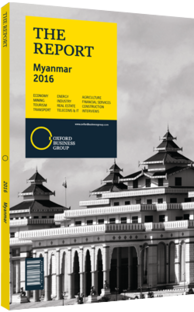Initiatives to increase access to Myanmar health services
Despite top-down economic and political shifts in recent years, Myanmar’s health sector still has significant ground to cover, particularly in rural communities that lack access to basic services. The government has pledged to ramp up efforts by dramatically increasing health expenditures, building new facilities and strengthening the talent pool.
As a result of political strife in certain geographically isolated parts of the country in the past, there are a number of neglected zones that suffer from little or no access to medical care. This is particularly true along the country’s eastern border, where the elimination of malaria is one of the highest priorities for public health, with the disease accounting for 17.7% of all deaths. In the absence of public health care options, these areas have relied on the support of donor agencies, NGOs and makeshift clinics.
According to official statistics from the MoH, the most frequent sources of care for the poorest communities have been in the form of home visits of unknown quality, private clinics and rural health centres. One-third of the poorest opted not to seek medical care when they were sick due to financial constraints, though 80% of low-income households received care from the private sector.
Progress
Myanmar is far behind its ASEAN counterparts in regards to health indicators, with the lowest life expectancy in Asia. The country’s health network requires significant national and international investments in infrastructure, human resources and essential medical equipment.
The November 2015 election has been widely acclaimed as a major victory for the development of Myanmar’s social welfare, with local experts predicting shifts in policy and investment that will significantly increase the access of essential health services. The World Bank-financed Essential Health Services Access Project (EHSAP), is also a major boost to the MoH target of implementing universal health care by 2030. With a total cost of $100m, the project will promote adequate health care with a focus on maternal, newborn and child health.
EHSAP will have three key components. Strengthening service delivery at the primary health care level will be achieved by channelling funds through MoH to selected regions, states and townships. Support for capacity-building and project management will aim to establish a cost structure for an essential health package for the entire population. Setting social assessment objectives, meanwhile, will help to identify vulnerable and underserved population groups, including women, children, ethnic minorities and internally displaced persons.
Medical Tourism
While there are an increasing number of private hospitals in Yangon and Mandalay, most wealthy families opt to fly to other countries in the region to receive specialist medical treatment. These patients travel to hospitals in Thailand, Singapore, Hong Kong and Malaysia to undergo cardiac and orthopaedic procedures due to the lack of local experts in those fields. The vast number of outbound medical trips has resulted in increased interest from international operators, who are eager to begin operations in Myanmar in an effort to improve the capabilities and expertise of the domestic health sector.
Spending Power
Initiatives led by the World Bank and other international donors, coupled with a dramatic increase in government expenditure, has placed the 2030 target for universal health care in reach for the public sector. Increased disposable income and public tenders are attracting international medical firms, which will raise the standard of private health care in the country. The government has also committed to significantly increase salaries for health professionals, which is expected to reduce the number of health professionals choosing to search for employment abroad.
You have reached the limit of premium articles you can view for free.
Choose from the options below to purchase print or digital editions of our Reports. You can also purchase a website subscription giving you unlimited access to all of our Reports online for 12 months.
If you have already purchased this Report or have a website subscription, please login to continue.

